The best bathroom extractor fans for a condensation-free bathing space
Primarily, the best bathroom extractor fans should effortlessly remove moisture-laden, stale air from your bathroom. However, you also want them to be whisper quiet and attractive to look at. We've gathered the top buys to make choosing easy


1. The list in brief ↴
2. Best overall: Envirovent SIL100T Axial Silent Extractor Fan
3. Quietest fan: Xpelair C4TS Axial Extractor Fan
4. Best for energy efficiency: Manrose QF100T Axial Fan
5. Best in-line fan: Blauberg UK TURBO-150 Extractor Fan
6. Best centrifugal fan: Vent-Axia Solo Plus Extractor Fan
7. Best budget buy: Manrose XF100S 4-inch Extractor
8. Types of extractor fans explained
9. How to choose an extractor fan
10. FAQs
11. How we test
Buying and fitting the best bathroom extractor fan you can find should be top of your to-do list and never an afterthought when it comes to good bathroom design. A brilliant extractor fan will ensure you enjoy spending time in your bathroom as well as banishing condensation, damo and even mould.
There is no getting away from the fact that bathrooms are humid, steamy places due to the nature of the activities that go on in them, such as hot baths. However, without the right approach to ventilation, they can quickly succumb to these fluctuations in moisture levels and end up needing redecoration due to the damage excessively damp air can cause.
Problems arise when the the warm, moisture-laden air in the room cools down, as this is when trapped humidity turns into water – something that will encourage mould and fungus to thrive. This is neither good for our health nor the room.
If all this sounds a bit scary, don't worry, there are easy ways to avoid issues. A high-quality, efficient bathroom extractor fan has the power to prevent all of this, designed to suck out the moisture from your bathroom, remove odours and stop mould growth in its tracks.
We've hunted down the very best bathroom extractor fans you can buy right now to ensure bathing bliss.

Need more advice or inspiration for your project? Get two free tickets to the Homebuilding & Renovating Show.
The Quick List
If you're keen to get your bathroom ventilation sorted but are short on time, don't worry. Take a look at this overview of all the fans on this list, along with handy quick links that allow to you skip down the page to get right into a more detailed review of the particular product that you like the look of.
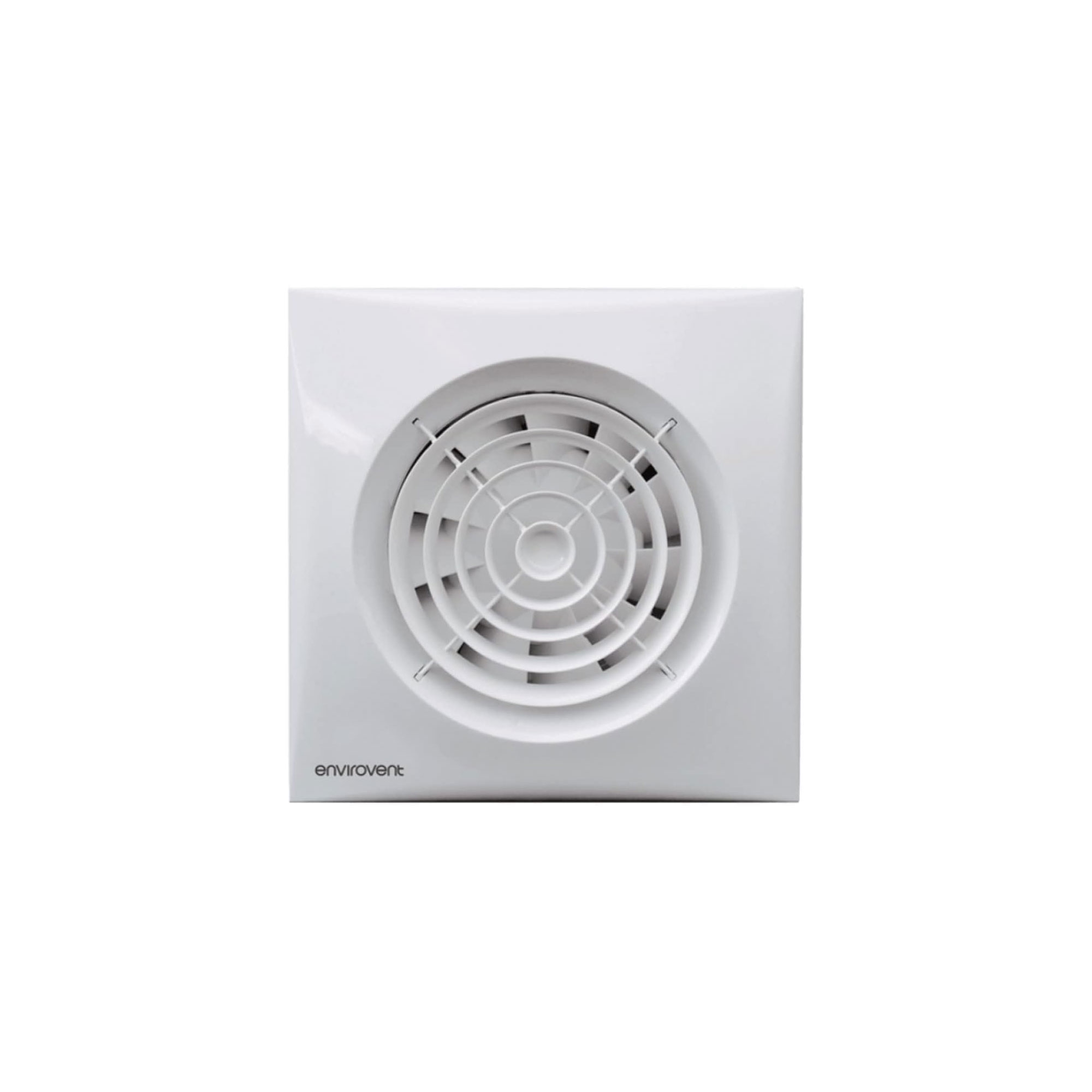
This came out on top thanks to its very impressive extraction rate of 26 litres per second (or 96 cubic metres per hour) as well as the fact that it has received a Quiet Mark award for its low sound output. It also offers excellent value for money and can be fitted into the wall or ceiling.
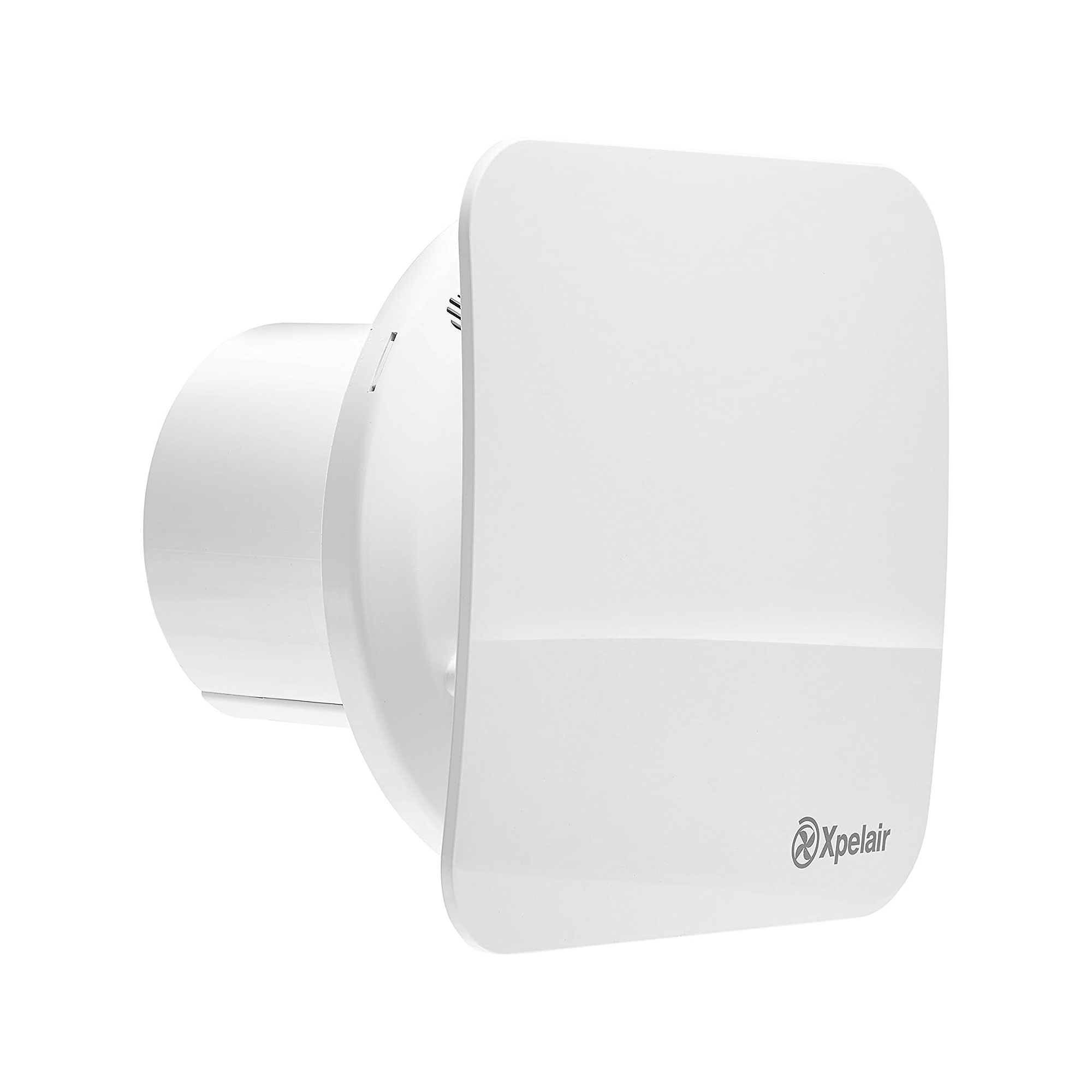
If it's a quiet-running extractor fan that you are after then this is the model for you. With a noise level of just 16dB, The Xpelair C4TS Axial Extractor Fan also looks really sleek and stylish when fitted and and is simple to install on a wall, ceiling or panel, using a 'twist-and-click' mechanism.
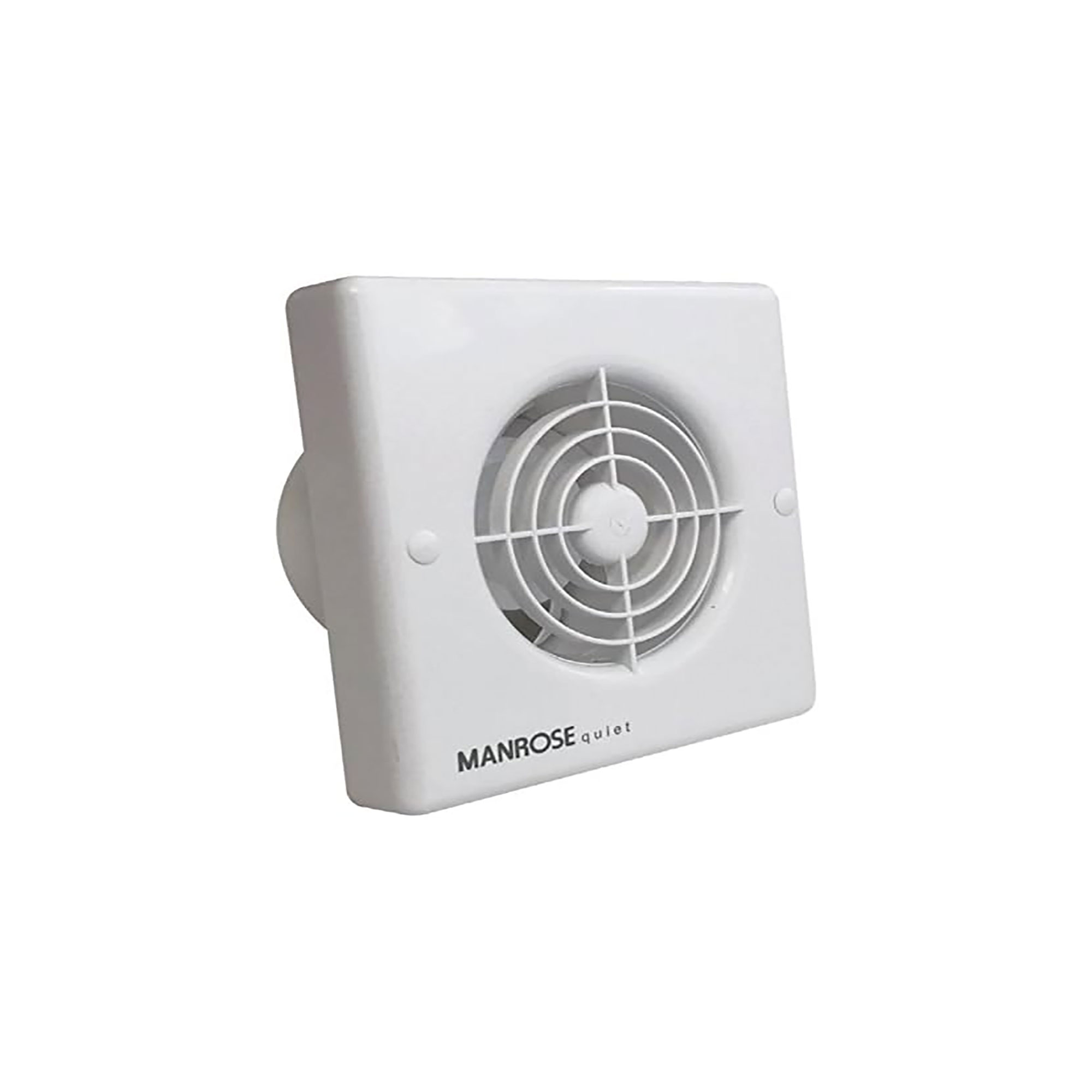
While this extractor fan, The Manrose QF100T's , might be less powerful that some of the other fans here, it has excellent energy efficient credentials meaning it still deserves a place on this list. The motor consumes just 4.8W.
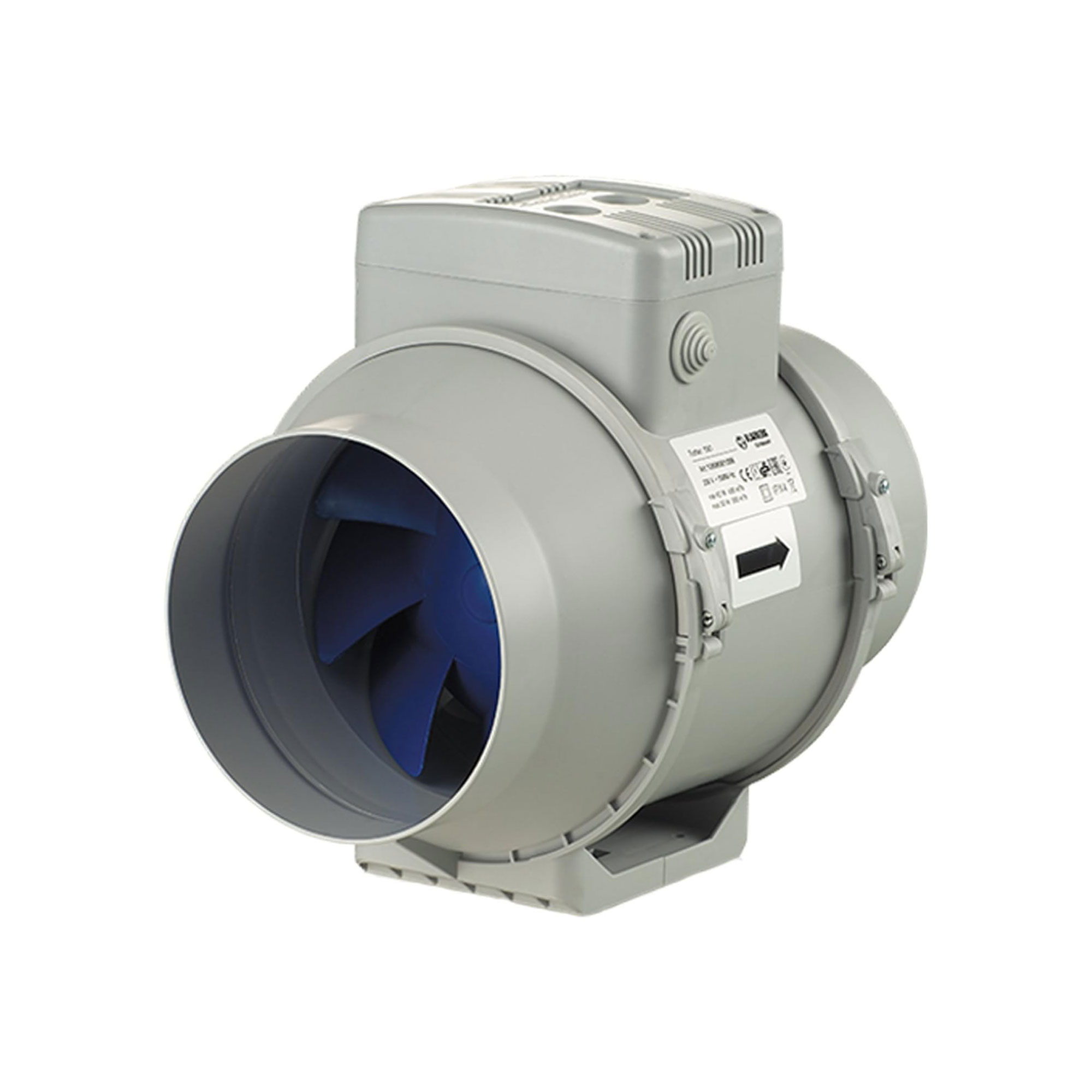
While not the most aesthetically pleasing model here, what it lacks in looks, it makes up for in practicality. This is designed to fit into ceilings away from an external wall and is compatible with several different duct sizes.
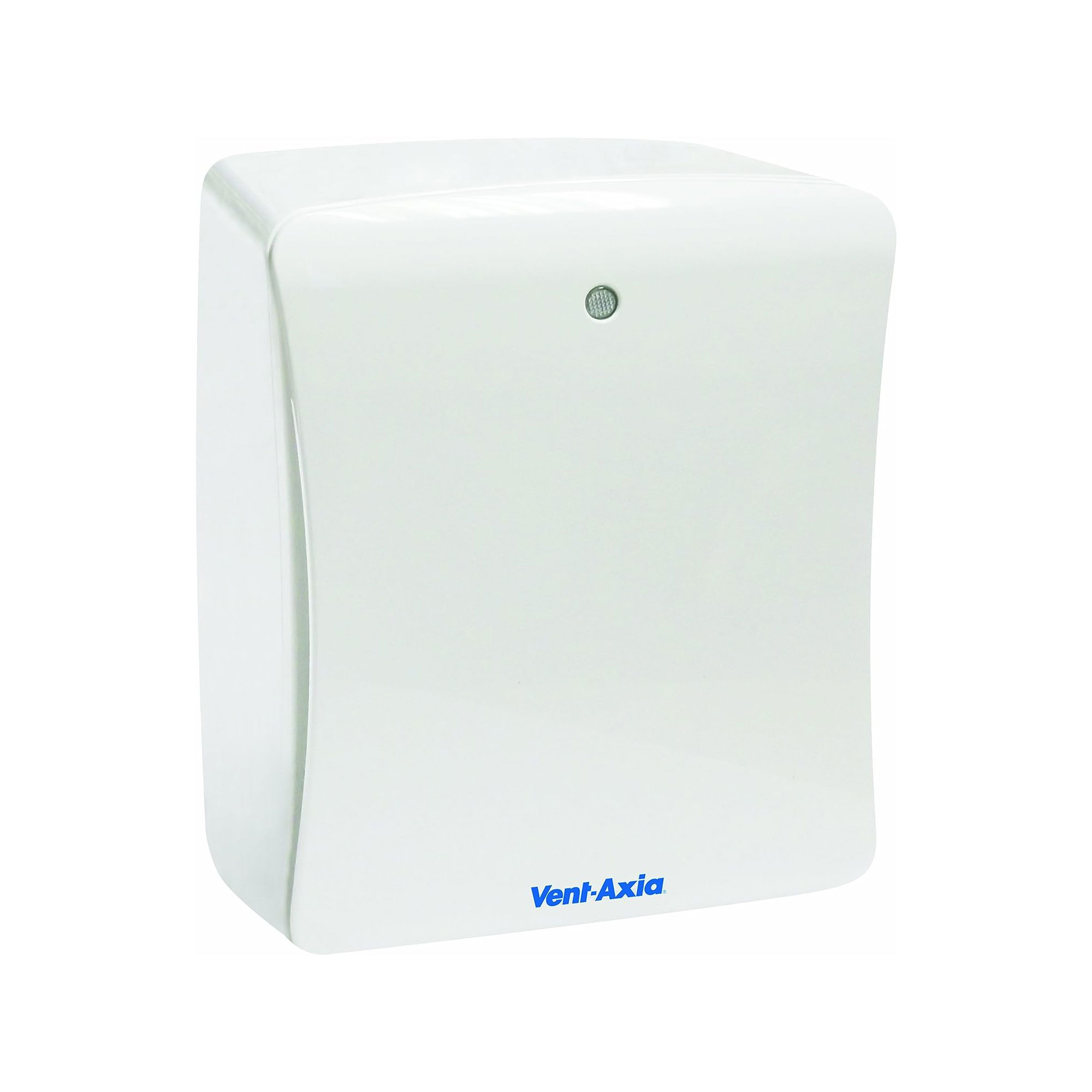
The Vent-Axia Solo Plus Centrifugal Extractor Fan is perfect for those with bathrooms which are situated some distance from an external wall. This is because centrifugal fans generate more pressure than axial fans, extracting down longer duct runs.
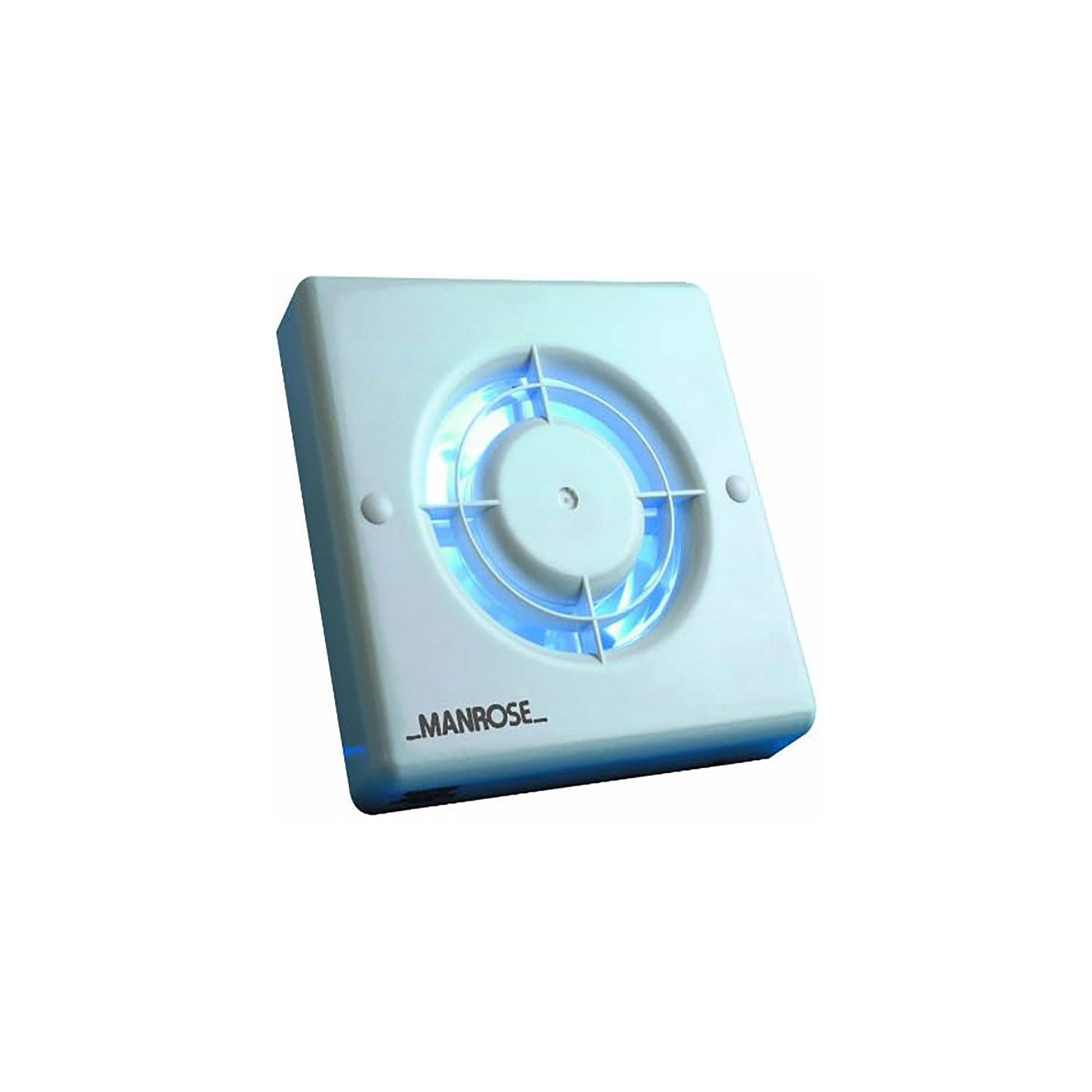
Despite its pleasing price tag, this 4-inch bathroom extractor fan does not disappoint when it comes to performance. While there is no timer function, it is simple to install with a good extraction rate.
Best overall model
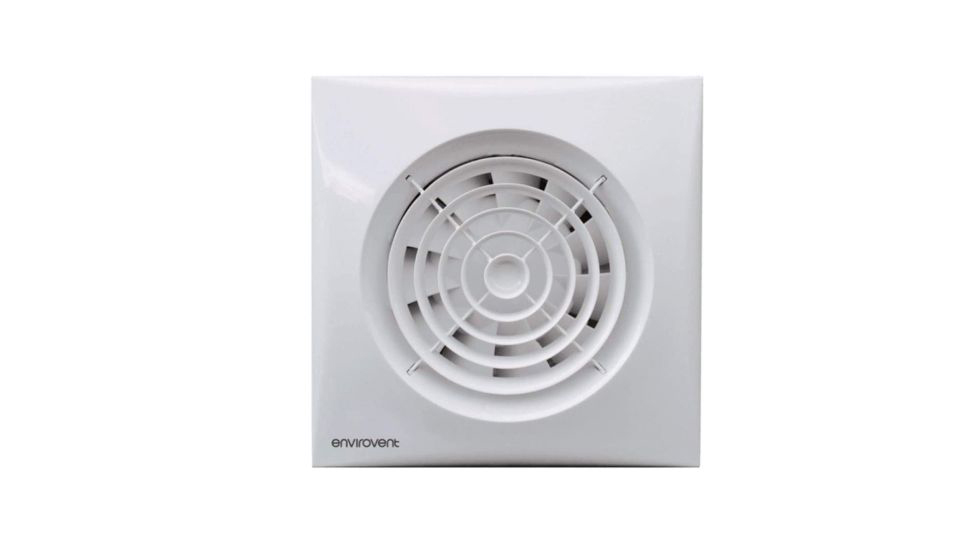
1. Envirovent SIL100T Axial Silent Extractor Fan
Specifications
Reasons to buy
Reasons to avoid
The Envirovent SIL100T Silent Extractor Fan has come out as our overall winner for multiple reasons – not least because of it's pleasingly subtle design.
The main thing to love about this fan has to be that fact that it is super quiet to run, emitting just 26.5 dB at 3m noise output, which is achieved through the motors being mounted on silent elastic blocks.
If you have been looking into what is normal humidity in a house and found your's is way off, you'll be pleased to hear that this fan's adjustable humidity sensor lets you set the relative humidity level (between 60-90%). This will activate the fan when required to help prevent condensation. It will then continue to operate until the relative humidity level is achieved (it doesn't take long, circulating air at the rate of 96 m3/h), and will turn off when the moisture level drops below your set level.
The run-on timer is another practical feature, which automatically calculates how long the fan should operate based on how long it has been running. The timer delay can be set manually for up to 30 minutes.
Quietest fan
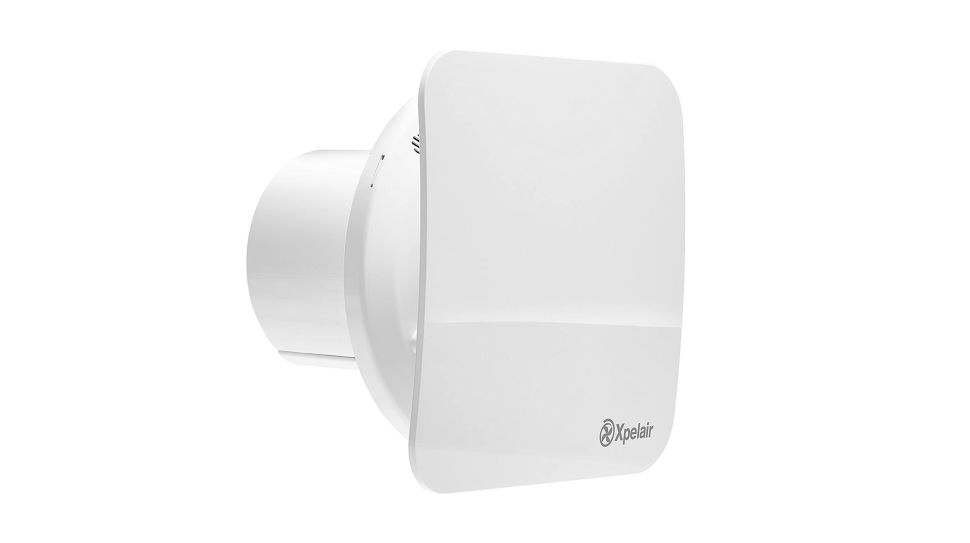
2. Xpelair C4TS Axial Extractor Fan
Specifications
Reasons to buy
Reasons to avoid
If you are fed up with extractor fans that make it sound as though you live next to a runway, then this one is the model for you.
The Xpelair C4TS is one of the quietest bathroom extractor fans on the market. This makes it possible to fully relax in your bathroom while it's doing its thing in the background. It also means any family in close proximity (such as sleeping children) won't be disturbed.
It can be easily installed on a wall, ceiling or panel – it simply requires a 'twist and click' to secure the lock into place. During installation you can select from two motor speed settings - 15 litres per second (l/s) and 21 l/s, or 54 metres cubed per hour (m3/h) and 75 m3/h. The slower speed is very quiet, but takes a bit longer to demist your bathroom.
Plus, while looks aren't always everything, this is such as simple, unobtrusive design that will easily fit with most modern bathroom ideas. Sleek and smooth, the white finish will blend in with any type of bathroom decor.
The timer can be adjusted between periods of 30 seconds and 30 minutes, and the fan comes with a two-year manufacturer's guarantee.
Best for energy efficiency
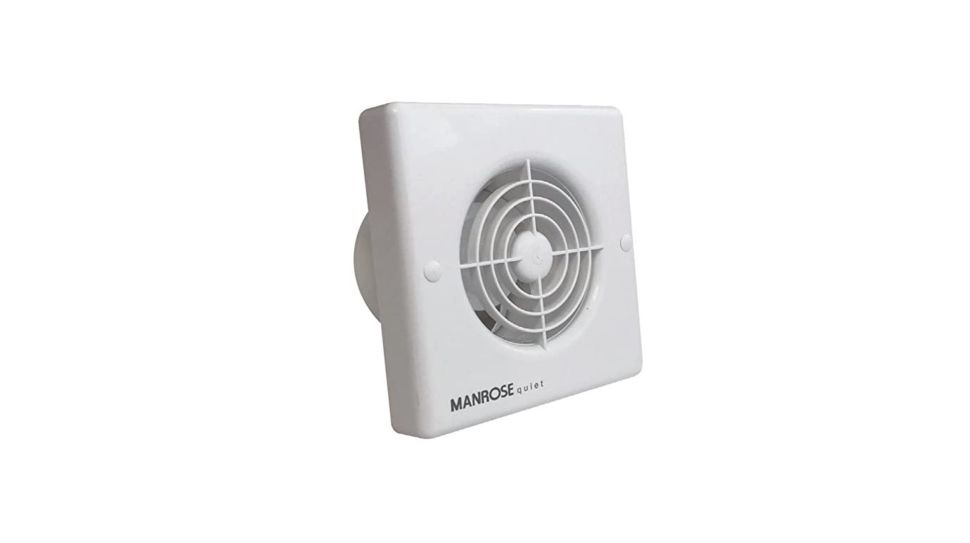
3. Manrose QF100T Quiet Axial Extractor Fan
Specifications
Reasons to buy
Reasons to avoid
At first glimpse this fan might not seem quite as impressive as the first two models on the list, but while not as powerful or quiet, Manrose's QF100T fan boasts performance-enhancing design credentials that make it a really excellent product well worth considering.
One of these features is a turning vane system, which smoothly directs air in the duct and reduces resistance when there is a change of direction. This ultimately helps to deliver high output.
A backdraught shutter is included too, which prevents air flowing in the wrong direction when the fan is turned off. This is a really energy-efficient design choice, with the motor consuming a maximum of 4.8W.
The fan is made from ABS thermoplastics so it's very durable - handy for those after family bathroom ideas who might be worried about a fan getting damaged. It also comes with a three-year manufacturer's guarantee.
Best in-line extractor fan
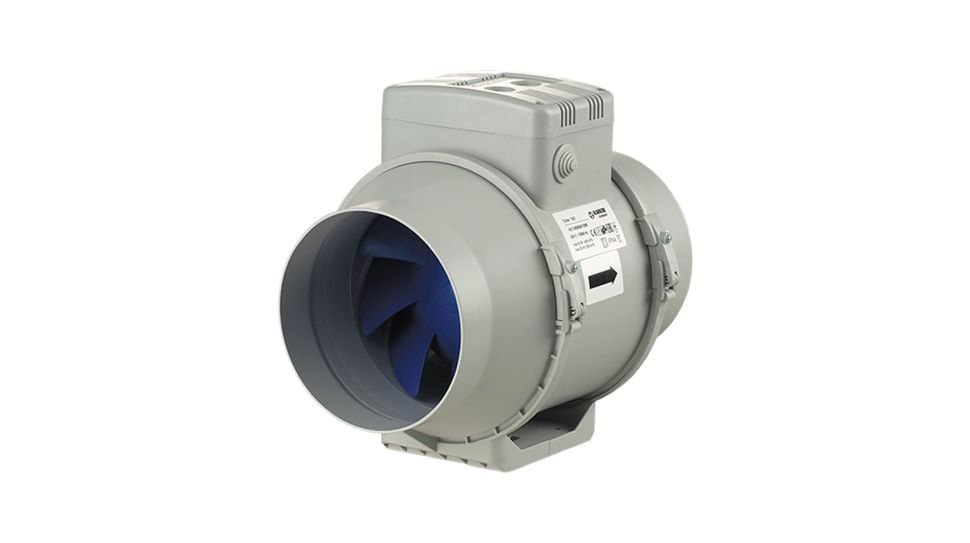
4. Blauberg UK TURBO-150 Extractor Fan
Specifications
Reasons to buy
Reasons to avoid
We admit this might not be winning any beauty contests any time soon, but bear with us. If you're willing to overlook it's aesthetic quirks, the Blauberg UK Turbo-150 is a high-power extractor fan that offers good value for money.
This is an in-line fan (more on this below) which means it's specifically designed to fit in your ceiling when your bathroom is very far away from an external wall, as can be the case with some small ensuite ideas that have been squeezed into awkward spaces. It fits several different duct diameter sizes, so there should be something suitable for your home.
It can be electrically wired directly into 240V mains power with a 50W motor and has an efficient range of mixed flow extractor fans – it can reach an impressively high air flow rate of up to 560 m3/hour. It takes roughly 30 minutes to install, including the wiring.
Best centrifugal fan
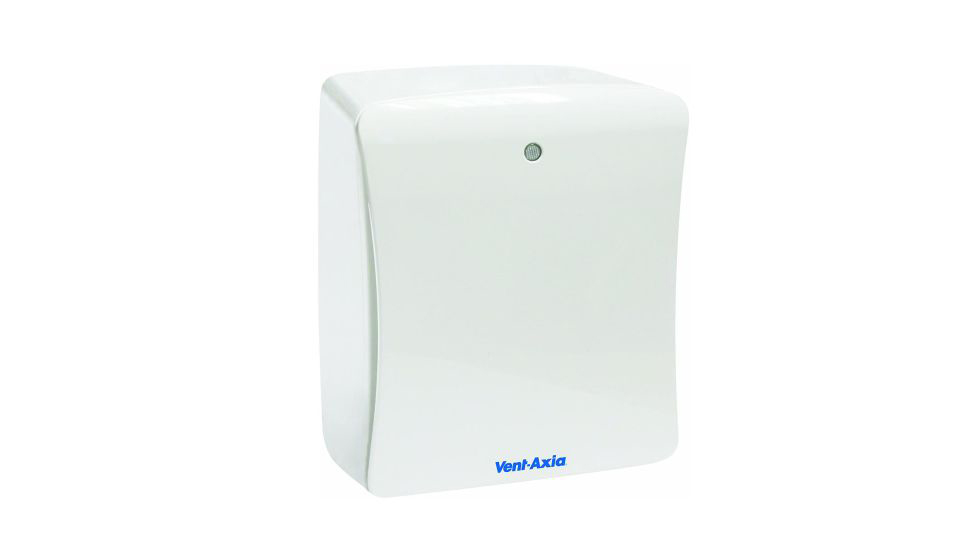
5. Vent-Axia Solo Plus Centrifugal Extractor Fan
Specifications
Reasons to buy
Reasons to avoid
Centrifugal fans can generate more pressure than axial wall fans and, because they can extract down much longer duct runs, it makes them a great choice for bathrooms which are much further away from an external wall – perfect for many ensuite bathroom ideas.
The versatile Solo Plus T from Vent-Axia is our top centrifugal fan pick for a few reasons. Firstly, it offers a choice of two boost motor speeds at installation - medium (17l/s) or high (22l/s) - and you can also select an optional constant trickle speed (9l/s) so there's always some flow through the room (even when no one is in there). You can revert back to your chosen setting via a pull cord, light switch or the humidity sensor.
It also comes with a 'delay' option, which means the fan won't kick in for around five minutes after the light is turned on. If you were to have a shower, for example, then it will continue to run for 20 minutes after the light is turned off to clear the humidity.
It can be mounted on a surface or installed flush, and the impeller allows for installations with longer duct runs using 100mm ducting. It comes with a two-year manufacturer's guarantee.
Best budget buy
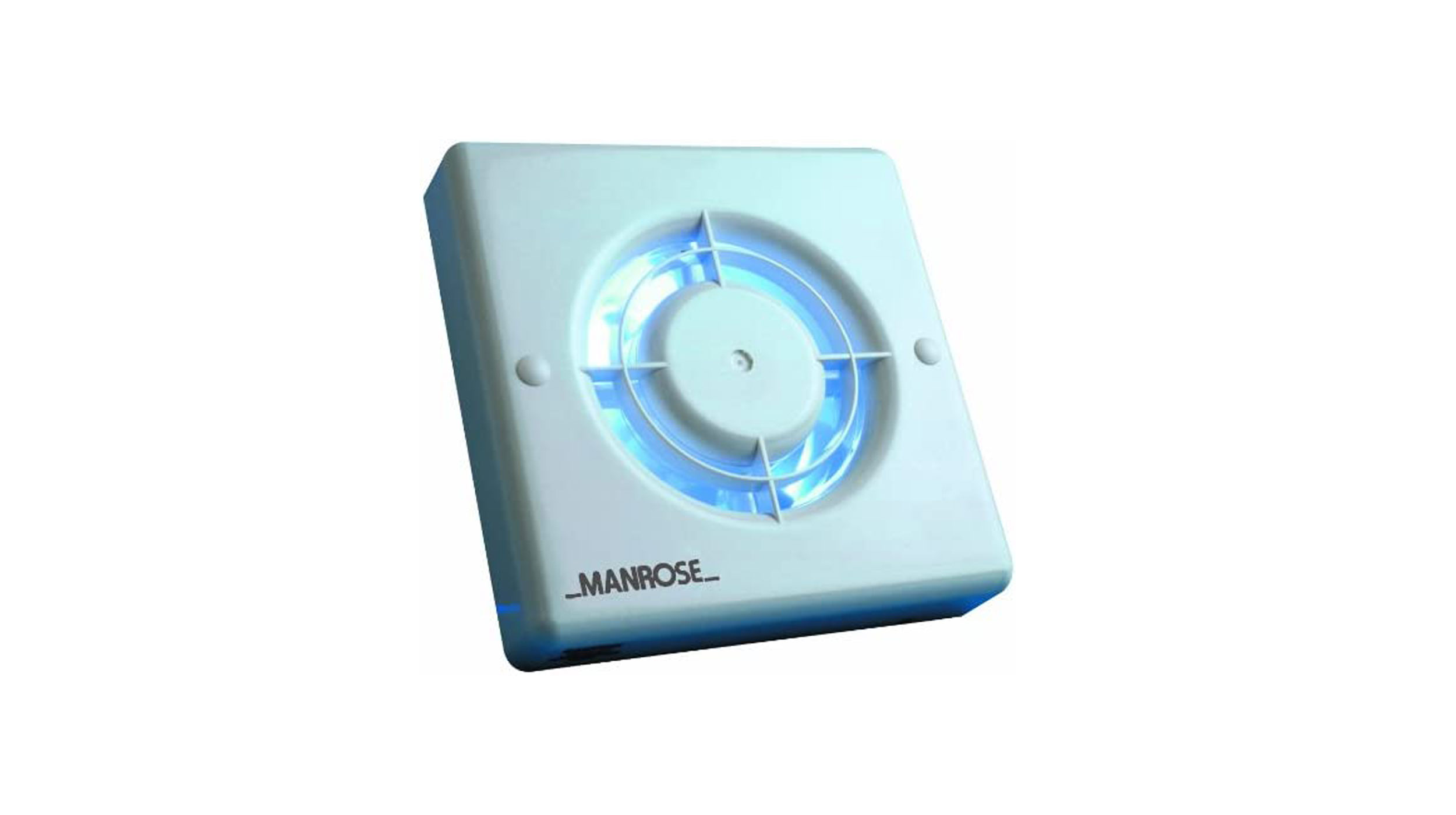
6. Manrose XF100S 4-inch Standard Bathroom Extractor Fan
Specifications
Reasons to buy
Reasons to avoid
This model is ideal for homeowners worried about the cost of fitting a bathroom. The Manrose XF100S axial fan is not only a very affordable bathroom extractor fan but it also extremely well-reviewed on Amazon.
One understandable concern about buying an extractor fan this cheap is the quality, but the XF100S is built with ABS thermoplastics for durability (useful in busy family households). It also comes with an impressive extraction rate and flexibility for mounting on the ceiling, window or walls.
At 37dB it is on the noisier side, but it is relatively easy to install - there is no timer function therefore it turns on when the bathroom light is on, meaning there's there's just two wires to connect. However, both internal wires are black so be sure to read the sticker on the casing to see which is which.
What different types of extractor fans are there?
There are three basic types of bathroom extractor fan:
- Axial (also known as wall fans) – the most common household extractor fan, these connect through an external wall, or in the ceiling on a very short duct run, and are generally cheaper and easier to install
- Centrifugal – these are best for bathrooms far away from an external wall (over 1.5m away), and can be mounted on the wall or ceiling. They tend to generate more pressure than an axial machine
- Inline – installed in your loft space, these machines sit on a length of ducting and have a much higher extraction rate, so they tends to be more expensive. They are effective options for extra-long distances of 40 metres or more to your nearest external wall.
How to choose an extractor fan
An extractor fan is non-negotiable in bathrooms but knowing which one is best for you can be tricky. Before heading out shopping, take into account the following factors.
Air extraction rate
This specifies how much air can be moved in a time interval. The larger bathroom you have, the higher the rate you'll need.
Most models far exceed the 15 l/s or 54 m3/hr minimum requirement in the Building Regulations, although those with higher extraction rates tend to produce more noise.
Size
Domestic extractor fans come in two sizes: 4-inch /100mm and 6-inch / 150mm.
A 4-inch model will suffice for most households, whereas 6-inch machines are appropriate for larger bathrooms (generally greater than 9m2), or those which are frequently used by larger families or households.
The size of the extractor will determine where it can be placed, and whether or not it can fit in your bathroom.
Noise
Bathroom extractor fans can be loud. So if noise is a big concern, particularly at night-time when you have sleeping children, then try to avoid fans at 30db and under. You can also look out for fans with silent running ball bearing motors, which help to reduce noise further.
Turning on and off
Extractor fans have to be turned on to start moving air and turned off to stop, and a number of features can affect how this happens. A fan might come with a pull cord for activation, or it can be wired to turn on and off via your light switch.
Some fans with humidistats will turn on automatically when the humidity in your bathroom reaches a pre-set level (and turn off when this level falls), while others come with PIR (Passive Infra Red) sensors which operate automatically when somebody enters the room.
Timer
Fans with timer models allow it to run for a set period of time even after you've turned your shower and lights off. This helps to ensure that all steam has been extracted.
And run-on timers automatically calculate how long a fan should operate based on how long it has been running.
FAQs
Can I install my own bathroom fan?
If wiring needs to be installed to fit your bathroom extractor fan then it is recommended to hire a professional electrician to make the hole and install the wiring.
But if you're replacing a standard-sized extractor fan, the hole will already be present and you can do this yourself on a DIY basis. Just make sure to turn off the mains power before you remove the old fan and be sure to familiarise yourself with how to fit an extractor fan first.
Do you have to vent a bathroom fan outside?
Yes. Bathroom extractor fans remove moisture from the air, so if this air is deposited into your loft or another room then the problem is moved to another area.
Ensuring your fan exits outside your home will help you to avoid damp and mould entirely.
Bear in mind that while it is not a legal requirement to own an extractor fan if your bathroom has an openable window, but buying a bathroom extractor fan is still a good idea - plus, they come in different shapes and size so you can find the right fit for your home
Do extractor fans need to be cleaned?
Bathroom extractor fans most certainly need to be cleaned – they are sucking away not only steam and stale air but also a fair amount of dust and dirt particles too.
It is advisable to familiarise yourself with how to clean a bathroom extractor fan and then carry out the task every six months.
How we review bathroom extractor fans
Here at Homebuilding.co.uk we like to get our hands dirty and trial as many products as possible, but in the instances where we aren’t able to, such as with the best bathroom extractor fans, we leave no stone unturned to provide you with the crucial information you need to know before buying.
Our team is passionate about DIY and home improvement (which probably won’t be a surprise) so we already have knowledge about the brands that make these extractor fans. Moreover, we have taken into account user reviews when compiling this buying guide, and gleaned key information from our sister sites such as Real Homes and Ideal Home.
There's a lot to consider to ensure you buy the best extractor fan for your bathroom, and we’ve scanned the pros and cons of each model in this buying guide to ensure you feel confident in choosing the right product for your home.
It isn't just bathrooms that need to be well ventilated – kitchens also rely heavily on products that help to keep them steam, moisture and odour free.
Be sure to buy the very best kitchen extractor fan you can – and make quiet running noise a priority if your kitchen is open plan to a dining or living space.
Get the Homebuilding & Renovating Newsletter
Bring your dream home to life with expert advice, how to guides and design inspiration. Sign up for our newsletter and get two free tickets to a Homebuilding & Renovating Show near you.
Jack has worked in journalism for over a decade and was the former News Editor of Homebuilding & Renovating between 2019 until 2023. In his time as News Editor he broke the most relevant and beneficial stories for self builders, extenders and renovators, including the latest news on the construction materials shortage, planning permission and green initiatives. In 2021 he appeared on BBC's The World at One to discuss the government's planning reforms.
He enjoys testing new tools and gadgets, and having bought his first home in 2013, he has renovated every room and recently finished a garden renovation.

